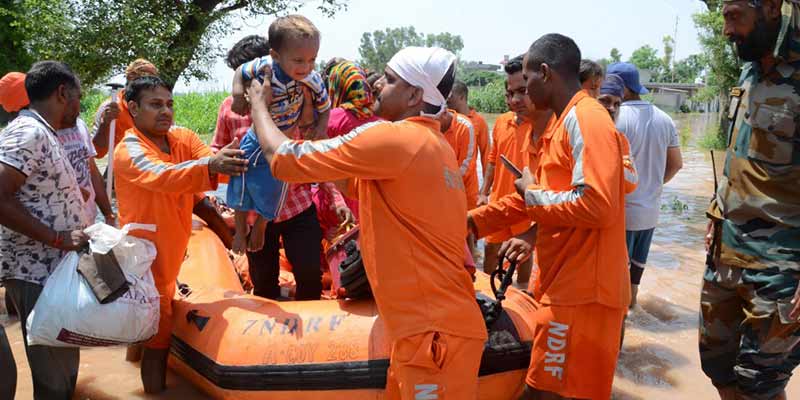- India
- Aug 08
Explainer - What is Incident Response System?
The National Disaster Management Authority (NDMA) has said that several states and Union Territories (UTs) are yet to implement the Incident Response System (IRS).
What is Incident Response System?
• India is vulnerable to a variety of natural and man-made disasters that hinder the country’s growth.
• The management of response in disasters requires the existing administrative set up, civil society and its various institutions to carry out a large number of tasks.
• The activities involved in response management would depend on the nature and type of disaster.
• It has been observed that in times of disaster, apart from lack of resources, lack of coordination among various agencies and an absence of role clarity amongst various stakeholders pose serious challenges.
• If the response is planned and the stakeholders are trained, there will be no scope for ad-hoc measures and the response will be smooth and effective.
• The National Disaster Management Authority (NDMA) issued the Guidelines on the Incident Response System (IRS) in July 2010 under Section 6 of the DM Act, 2005 for effective, efficient and comprehensive management of disasters in India.
• The vision is to minimise loss of life and property by strengthening and standardising the disaster response mechanism in the country.
• The Incident Response System (IRS) is a management system.
• It is an effective mechanism for reducing the scope for ad-hoc measures in response.
• It incorporates all the tasks that may be performed during disaster managements irrespective of their level of complexity.
• It envisages a composite team with various sections to attend to all the possible response requirements.
• The IRS identifies and designates officers to perform various duties and get them trained in their respective roles.
• If IRS is put in place and stakeholders trained and made aware of their roles, it will greatly help in reducing chaos and confusion during the response phase. Every one will know what needs to be done, who will do it and who is in command, etc.
• It systematically packages best practices in management with proper monitoring system, Management Information System and organisational principles making it capable of adapting and improving the effectiveness of the response.
IRS Organisation
• The IRS organisation functions through Incident Response Teams (IRTs) in the field.
• In line with administrative structure and DM Act 2005, Responsible Officers (ROs) have been designated at the state and district level as overall in charge of the incident response management.
• The Responsible Officer may however delegate responsibilities to the Incident Commander (IC), who in turn will manage the incident through IRTs.
• The IRTs will be pre-designated at all levels — state, district, sub-division and tehsil/block.
• On receipt of Early Warning, the Responsible Officer will activate them. In case a disaster occurs without any warning, the local IRT will respond and contact RO for further support, if required.
• A Nodal Officer has to be designated for proper coordination between the district, state and national level in activating air support for response.
Genesis of NDMA
• The government of India recognising the importance of disaster management as a national priority, had set up a High Powered Committee (HPC) in August 1999 and a National Committee on Disaster Management in 2001 after the Gujarat Earthquake to make recommendations on the preparation of disaster management plans and to suggest effective mitigation mechanisms.
• However, after the Indian Ocean tsunami of 2004, the government took a defining step in the legislative history of the country, through an Act of Parliament, by creating the National Disaster Management Authority (NDMA) to spearhead and implement a holistic and integrated approach to disaster management in India.
• NDMA was constituted on May 30, 2005 by an executive order of the government. Subsequently, the Disaster Management Act, 2005 was enacted on 23 December, 2005.
• NDMA was notified on September 27, 2006 under the provisions of the Disaster Management Act, 2005.
• The Prime Minister is the chairperson of the NDMA.
Disaster Management Act
• The Disaster Management Act, 2005 (DM Act 2005) lays down institutional and coordination mechanism for effective disaster management at the national, state, district and local levels.
• As mandated by this Act, the government of India created a multi-tiered institutional system consisting of the NDMA headed by the PM, the State Disaster Management Authorities (SDMAs) headed by the respective chief ministers and the District Disaster Management Authorities (DDMAs) headed by the district collectors and co-chaired by chairpersons of the local bodies.
• These bodies have been set up to facilitate a paradigm shift from the hitherto relief-centric approach to a more proactive, holistic and integrated approach of strengthening disaster preparedness, mitigation, and emergency response.
Manorama Yearbook app is now available on Google Play Store and iOS App Store



